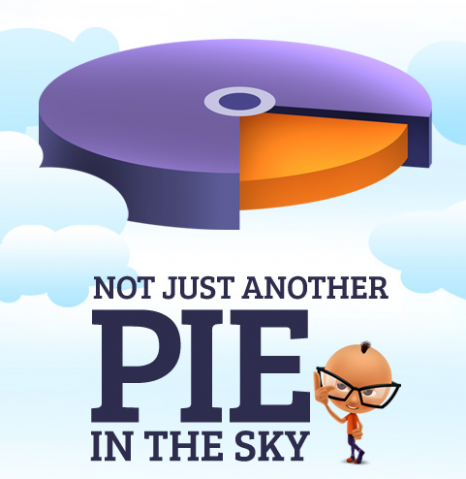Hypothetically speaking, if one was offered a job and the decision to accept or reject was based on how far one had to travel, would “Tenmiles” be a round enough estimate, to base a rejection on? The answer is locked away somewhere in this piece. Read on to find out…
Education, bunking and creation
Shalin Jain’s enchantment towards Internet started way back, when he was in high school and the thought dawned on him how powerful a tool it was for connecting people. Blog, as a platform for communicating ideas caught on early and he used WordPress as effortlessly and seamlessly as one uses notebooks to make personal notes. Doing B.Sc in Statistics from Loyola college, proved beneficial in many ways. It helped develop an analytical mind and the flexibility to work during those years. At the company that he worked for, Indchem Software Technology, Shalin learnt the ropes in design through ASP & JSP Applications. Submerged in work, college attendance was to take a nosedive. At the behest of the Principal and some paternal advice, Shalin almost took the brow-beaten path of doing an MBA. While still mulling over his future, one day he got a job offer from his old organisation. Though a seasoned hand by now, yet some parts of the student in him remained alive. The distance to workplace and back was approximately 10 Miles. He decided to chuck it. Tenmiles Tenmiles Tenmiles, the words reverberated – what could have been and what he chose.
The Brand Tenmiles
![]() Instantaneously, his creative mind went on an overdrive. What if he started a company with a name like “Tenmiles” and live his dreams. A “no” to something is really about saying “yes” to something else. Thus was born the idea. Initially it was a garage-level operation and the focus of business was on Web Design & Flash programming. Functioning out of the domestic market is very challenging for a startup. The constant “back and forth” approach can be unnerving and puts additional pressure on time and deadline. It also did not help that there were many companies claiming to develop products.
Instantaneously, his creative mind went on an overdrive. What if he started a company with a name like “Tenmiles” and live his dreams. A “no” to something is really about saying “yes” to something else. Thus was born the idea. Initially it was a garage-level operation and the focus of business was on Web Design & Flash programming. Functioning out of the domestic market is very challenging for a startup. The constant “back and forth” approach can be unnerving and puts additional pressure on time and deadline. It also did not help that there were many companies claiming to develop products.
Screenswift, creates installable Flash screensavers from any Flash movie, took only 16 days to develop. There were two versions: Personal edition & the Premium edition later in 2001. This product would gain huge popularity amongst design agencies. The desktop screensaver market was big towards the end of 90’s and early 00’s. Not off late. In 2005, Helpdesk Pilot, another very successful product was launched. In the first month itself, the product got in 11 customers and umpteen sales enquiries. It’s a platform built to help you provide excellent customer support effortlessly. HappyFox was another cloud based customer support software which got launched soon and now happens to be the flagship product. In the words of Shalin, the design element in this product was very good. In 2010, launch of DoAttend established the company’s reputation on strong customer driven focus.
SWOT Analysis
Self admittedly, the company did not have a structured approach to Marketing and only started investing in it, after the launch of DoAttend. Shalin gave the example of a painter, who paints not with “awards” in mind but what the painting is going to look like. Best products are built, keeping its user experience in mind. DoAttend was a very successful product and word-of-mouth marketing, worked to its advantage. The focus was the “customer” and never the media. This approach worked well and brought customers in droves.
The organisation also believes in lean staffing which in a way has resulted in optimising productivity. Shalin is of the firm belief that in case of a multi-product approach, each product must be self sustainable. A half-baked approach never works.
The company has been bootstrapped to generate funds.
Inspiration
In college, Shalin had a neighbour – another youngster who was only older by a few years. This was in the year 1998 – 99. Shalin was in a stage in life where he wasn’t easily distracted and thus had the opportunity to study his neighbour’s methods, his drive, passion. This was perhaps the single-most important trigger.
Building Successful Products
A product can be very good, but with average business scope, whereas it can also be average but with a huge business potential. Every product developer needs to figure out which market they would like to operate in. Here are some tips offered by Shalin for startups:
- Have the end consumer in mind and build accordingly
- Be clear on what is the exact problem you’d like to address by building this product
- Trying to build too much. Too many functionalities might not be the right way
- All great products have a solid focus on design and make sure you have one!
On Product Ecosystem
When he started in 2000, there was nothing of the kind. Developers at that stage, including Shalin were used to experimenting and working without much support. Having said that, it was important to get the right advice, inspiration and a direction. There should be a system in place to do a reality-check. Mentoring sessions usually turn out to be hype. The need of the hour was to get away from jargon-throwing and hand-hold some of the young boys and girls who are only equipped with a brilliant idea. And, there are many.
The country has huge potential and an opportunity to come up with top-notch products which can be world beaters.












